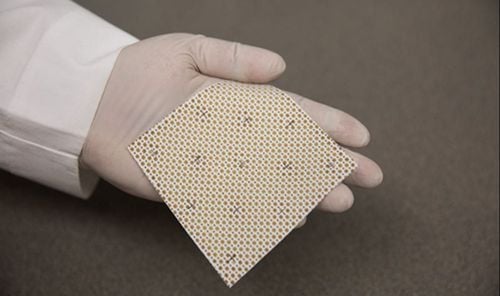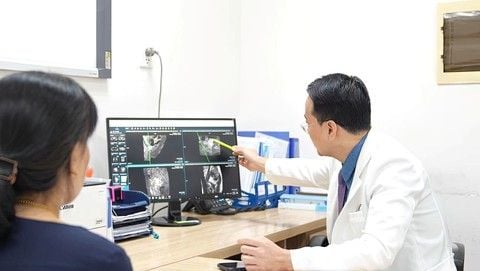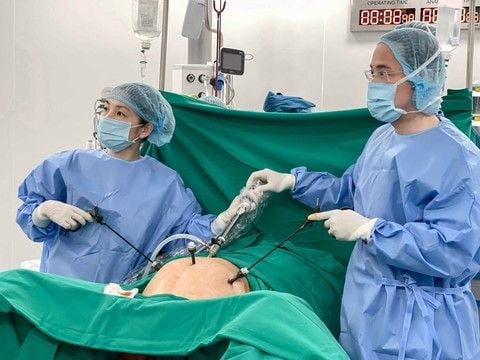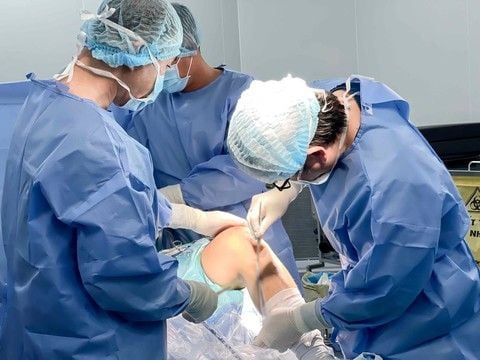Physiological saline is used a lot in daily life. However, what is physiological saline, what are the effects of physiological saline and what types of physiological saline are available on the market, not everyone knows clearly.
1. What is physiological saline?
Physiological saline is a 0.9% Sodium Chloride salt solution, called "physiological" because it is an isotonic solution, with osmotic pressure equivalent to that of body fluids (blood, tears, ...) under normal conditions.
To create physiological saline, people dissolve 9g of pure salt in 1 liter of distilled water. Although the ingredients and preparation method are simple, to create a standard physiological saline product, many factors must be ensured, from the salt ingredients must be clean, free of impurities, free of bacteria, distilled water must meet standards, the preparation tools must be clean, the weighing and measuring process must be standard so that the saline has the right concentration, the preparation area must be sterile, ...
Some families have the habit of making their own physiological saline for use, mothers need to pay attention to the above issues, because if the operation process is not guaranteed, bacteria can accidentally be introduced deep into the body when used. Using saline solutions produced by pharmaceutical companies is a safer choice, because these products are manufactured on modern, closed lines, following strict standards of sterility. Physiological saline solutions on the market currently have the following main dosage forms:
Bottles of intravenous solution: used for direct infusion, with high sterility, usually in 100ml, 250ml, 500ml bottles.
Bottles of physiological saline for eye drops, nose drops, ear drops are usually produced in 10ml bottles, in which saline eye drops are produced according to eye drop standards, with the highest sterility, equivalent to intravenous drugs. Physiological saline eye drops can be used for nose drops, ear drops, but absolutely do not do the opposite. When choosing physiological saline eye drops, you must choose the right type labeled "eye drops" or with an eye symbol on the drug label, to ensure that you use the correct type produced for the eyes.
Physiological saline is used to wash wounds and gargle, and is usually packaged in large 500ml bottles. Although it does not require high sterility like intravenous drugs or eye drops, this type of physiological saline for external use must still meet the criteria of external drugs in terms of purity and sterility.
In addition, imported physiological saline such as Japanese physiological saline and American physiological saline also has a single-dose saline formulation. The saline is packaged in small 5ml tubes for one use. This single-dose saline has many advantages, and can only be used once, so it limits bacterial contamination when using large-capacity bottles for many days. The tip of the tube is often rounded, making it very safe for use in nasal drops and nasal washes for children. However, this type of physiological saline is quite expensive.
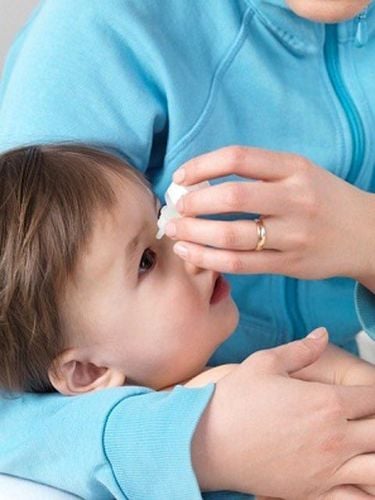
2. What is the effect of physiological saline?
Physiological saline has many uses, the form of physiological saline solution for infusion is used in cases where the body needs to replenish water and electrolytes such as when vomiting, diarrhea, etc. When infusing, the doctor may prescribe additional drugs with therapeutic effects to the physiological saline, the infusion rate is adjusted to a suitable level so that the drug reaches the optimal concentration in the patient's body.
Physiological saline used to clean the eyes: Physiological saline helps clean dirt on the surface, moisturizes and soothes the eyes. When a baby is born, the baby's eyes are still covered with a lot of lochia, the baby's tears are not yet developed so they cannot clean themselves.
Therefore, it is necessary to regularly clean the baby's eyes with physiological saline in the first three months to protect the eyes. In addition, if the child's eyes show signs of infection, red eye pain, eye discharge, etc., parents need to use saline to drop into the child's eyes, wipe clean with a soft towel, and then use medication. Using saline to clean the eyes first helps the medication to be more effective. For older children, you can occasionally use saline to drop into the eyes when traveling long distances with a lot of dust, after swimming, etc. to remove dust and excess mucus to prevent eye infections. Use saline to clean the nose and throat when suffering from rhinopharyngitis or respiratory tract infections. Washing the nose with saline helps remove mucus, making the nose clear, making it easier for the child to breathe. You should choose a saline nasal dropper with a rounded tip to avoid damaging the nasal mucosa when washing the child's nose. Avoid using a bottle with a pointed tip or using a syringe. If the child's mucus is too thick and abundant, you can drop saline solution into the nose combined with a nasal aspirator. The operation must be gentle to avoid hurting the child. The nasal aspirator must be cleaned after use.
Saline solution to wash the ear in cases of ear infection, drop 1-2 drops into the ear and then use a clean cotton swab to dry it. Saline solution can be used to clean before using specific ear drops, helping the medicine to work better.
Saline solution helps wash wounds, remove dirt and bacteria on the surface. The doctor may prescribe antiseptic solutions to be used with saline, or if the skin wound is mild, saline solution can be used alone, the wound can heal on its own thanks to the body's resistance. Saline solution used to gargle helps eliminate bacteria in the throat area, protect the throat mucosa, and prevent infection.

3. Use saline properly
Although saline has many uses, its use is only effective if the saline you use is of guaranteed quality and used properly. Currently, due to the high demand for saline on the market, some manufacturers, for profit, have produced saline that is not guaranteed, with unsanitary factory conditions and poor quality input materials.
Some types of saline when registered for circulation on the market are not registered as drugs but as cosmetics, applying lower standards in the production process, so the quality of saline contains many health risks. When choosing saline, whether it is saline for external use to wash wounds or rinse the mouth, consumers should choose products from reputable manufacturers, products with a registration number for circulation as a drug, with full information on the date of manufacture, expiry date, and the appearance of the saline is transparent and colorless. If you choose imported saline such as American saline or Japanese saline, you should carefully research the product information and buy it at reputable pharmacies to ensure quality products.
Saline bottles are used for eye drops, nose drops, and ear drops, and should only be used for 2-3 weeks after opening the lid. Do not use them for longer because the bottle will have a high risk of infection. Only use saline when necessary and do not overuse it, especially for children. If your child's health is normal, you should not wash your child's nose with saline every day. Frequent washing of the nose will remove the protective mucus layer of the nasal mucosa, causing dryness, damage to the mucosa and increasing the risk of infection. Regularly washing your child's eyes with saline if they are not infected is also unnecessary. Frequent washing of the eyes will dry the eyes, increase the risk of keratitis and eye infections.
Thus, physiological saline is very good, has many effects, if you choose a good saline product and use it properly, do not abuse it, it will bring many effects, helping to protect the health of the whole family.
If you have unusual symptoms, you should be examined and consulted by a specialist.
To arrange an appointment, please call HOTLINE or make your reservation directly HERE. You may also download the MyVinmec app to schedule appointments faster and manage your reservations more conveniently.
To arrange an appointment, please call HOTLINE or make your reservation directly HERE. You may also download the MyVinmec app to schedule appointments faster and manage your reservations more conveniently.




